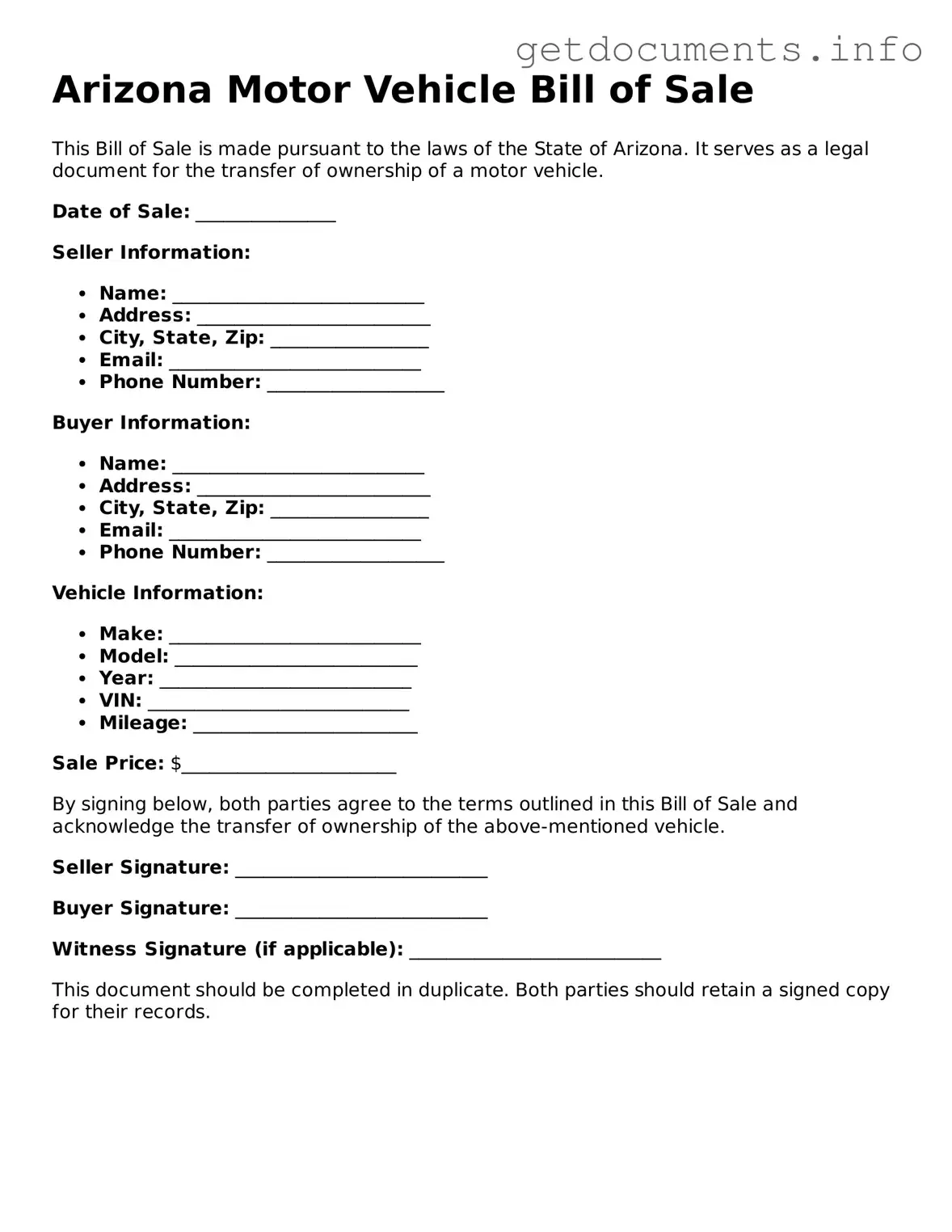The Arizona Motor Vehicle Bill of Sale form serves as a crucial document in the process of transferring ownership of a vehicle from one party to another. This form captures essential details about the transaction, including the names and addresses of both the seller and the buyer, as well as the vehicle's identification number (VIN), make, model, and year. Additionally, it outlines the sale price and any applicable terms of the sale, such as whether the vehicle is being sold "as-is" or if any warranties are provided. Completing this form accurately is vital, as it not only provides a record of the transaction but also helps protect both parties in the event of future disputes. Moreover, the Bill of Sale is often required when registering the vehicle with the Arizona Department of Transportation, making it an indispensable part of the vehicle transfer process. Understanding how to properly fill out this form can simplify the sale and ensure compliance with state regulations, making it easier for both buyers and sellers to navigate the complexities of vehicle ownership transfers.
